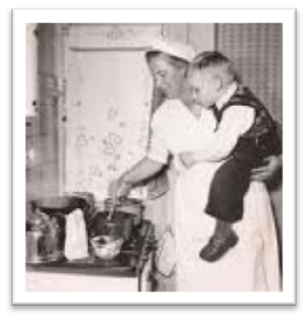 Anxiety appears as a feeling of nervousness, apprehension, fear, or worry. We have all experienced it at one time or another. Usually our fears and worries are justified, such as worry in anticipation of taking exam. However, anxiety may occur without a cause, or it may be out of proportion to the reason. Severe anxiety can have a serious impact on daily life.
Anxiety appears as a feeling of nervousness, apprehension, fear, or worry. We have all experienced it at one time or another. Usually our fears and worries are justified, such as worry in anticipation of taking exam. However, anxiety may occur without a cause, or it may be out of proportion to the reason. Severe anxiety can have a serious impact on daily life.Anxiety disorder is an excessive, unrealistic, and difficult to control worry over a period of at least six months. It's associated with three of the following:
· Restlessness
· Easily tired
· Trouble concentrating
· Irritability
· Muscle tension
· Sleep problems
Anxiety can be accompanied by a variety of physical symptoms. It may appear upset stomach, diarrhea, trouble breathing, feel as if one may faint or like having a heart attack.

Basic kinds of anxiety disorders
Panic Attacks – often experienced as a feeling of an intense fear that something terrible is about to happen, like you might die or lose your sanity. These experiences can be extremely frightening and seem quite unusual when first encountered.
Agoraphobia – a fear of being in the environment that is unfamiliar, where we have only little control upon a situation. It may include wide open spaces, crowded places, or travelling. It is often connected with a social embarrassment, as the agoraphobic fears of having a panic attack in public. Many agoraphobics will only frequent a few secure locations, such as their home, a specific route to work, or sometimes the homes of friends or relatives. In the extreme, they will not leave their home.
Depersonalization - It is a feeling of watching oneself act, while having no control over a situation. A person is feeling like in a movie or in a dream, it’s a feeling of disconnection from a body, and the external world seems strange or unreal
Social Anxiety: This can include social nervousness, shyness, fear of public speaking, or just general anxiety sensations while interacting: stress, rapid heartbeat, sweaty palms, etc.
Phobias
Phobia is the unrelenting fear of a situation, activity, or thing that causes one to want to avoid it.
Phobias are largely underreported, probably because many phobia sufferers find ways to avoid the situations to which they are phobic. Objects or situations causing phobia can be really diverse, sometimes even surprising.
Here is a list of the few interesting ones:
Alliumphobia – Fear of garlic.
Ambulophobia – Fear of walking.
Anuptaphobia – Fear of staying single.
Consecotaleophobia – Fear of chopsticks.
Coprastasophobia – Fear of constipation.
Dextrophobia – Fear of the right-side of the body.
Geumaphobia – Fear of taste.
Gnosiophobia – Fear of knowledge.
Hellenologophobia – Fear of Greek terms.
Kakorrhaphiophobia – Fea r of defeat.
Melophobia – Fear or hatred of music.
Oikophobia – Fear of home surroundings.
Osmophobia – Fear of smells or odors.
Peladophobia – Fear of baldness.
Peniaphobia – Fear of poverty.
Photoaugliaphobia – Fear of glaring lights.
Phronemophobia – Fear of thinking.
Sitiophobia – Fear of food or eating.
Xyrophobia – Fear of razors
Heksakosjoiheksekontaheksafobia– Fear of number 666

http://www.psychologyinfo.com/problems/panic_disorder.html



 In Poland in 2006 response to the suicide of a girl after she was sexually molested in school, the Polish Minister of Education, launched a "zero tolerance" school reform. Under this plan, teacher would have the legal statusof civil servants, making violent crimes against them punishable by higher penalties. Head teacher will be, in theory, able to send agressive pupils to perform community service and this students' parents may also be fined. Teachers who fail to report violent acts in school could face a prison sentence.
In Poland in 2006 response to the suicide of a girl after she was sexually molested in school, the Polish Minister of Education, launched a "zero tolerance" school reform. Under this plan, teacher would have the legal statusof civil servants, making violent crimes against them punishable by higher penalties. Head teacher will be, in theory, able to send agressive pupils to perform community service and this students' parents may also be fined. Teachers who fail to report violent acts in school could face a prison sentence.











